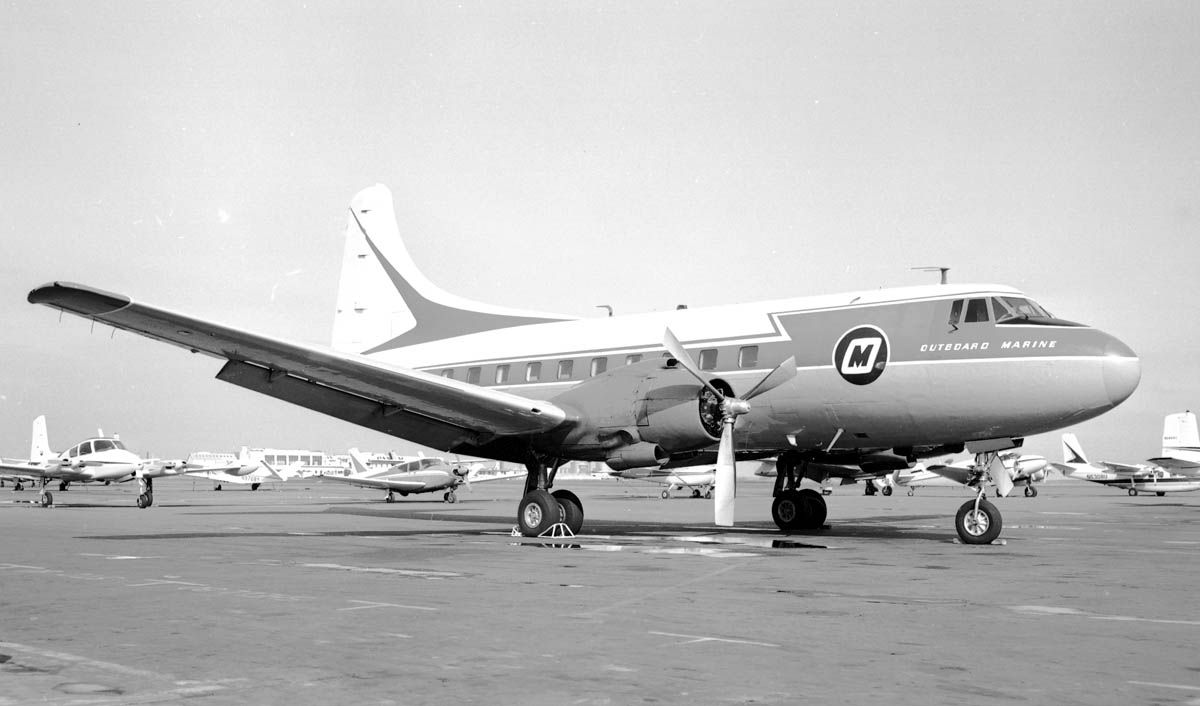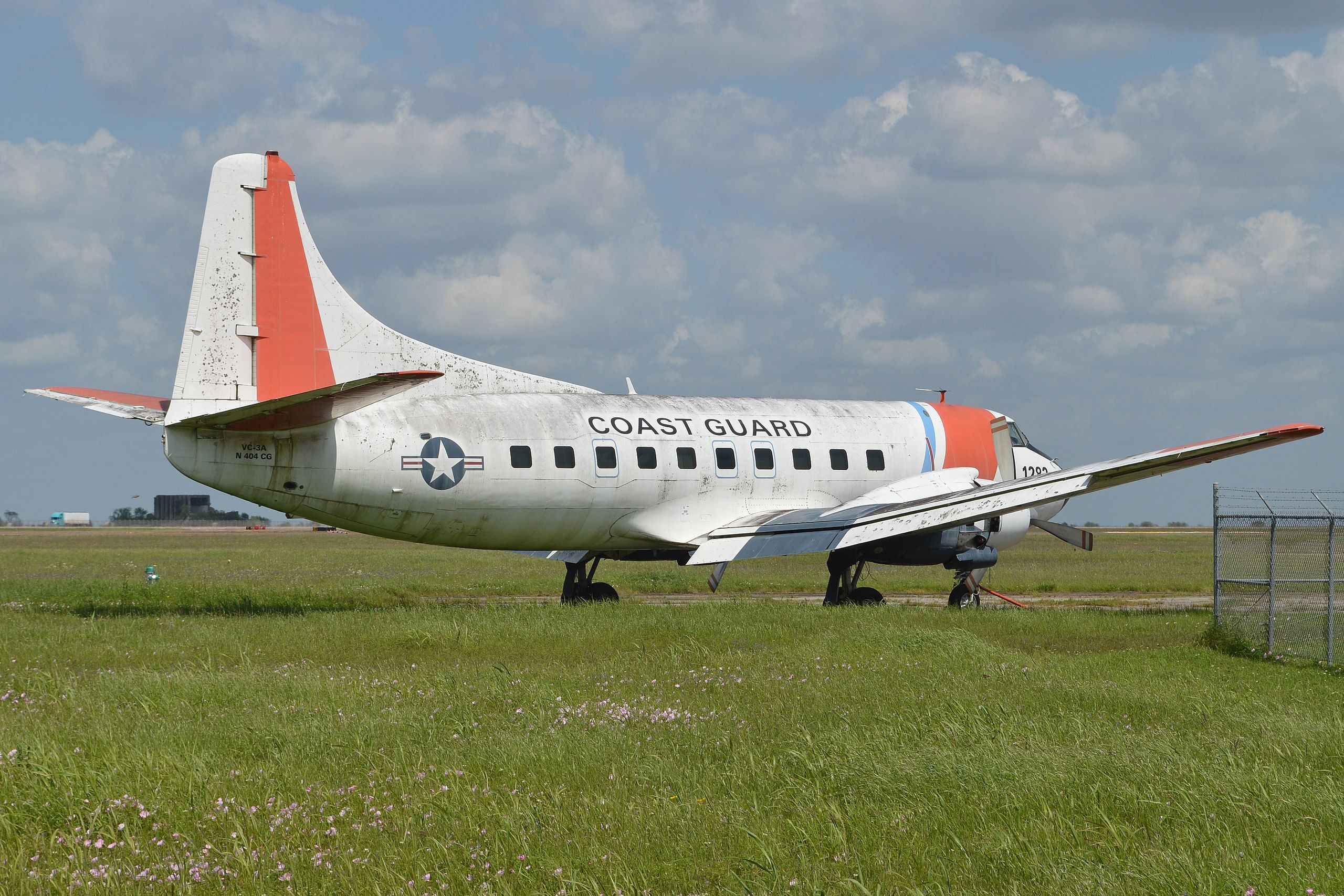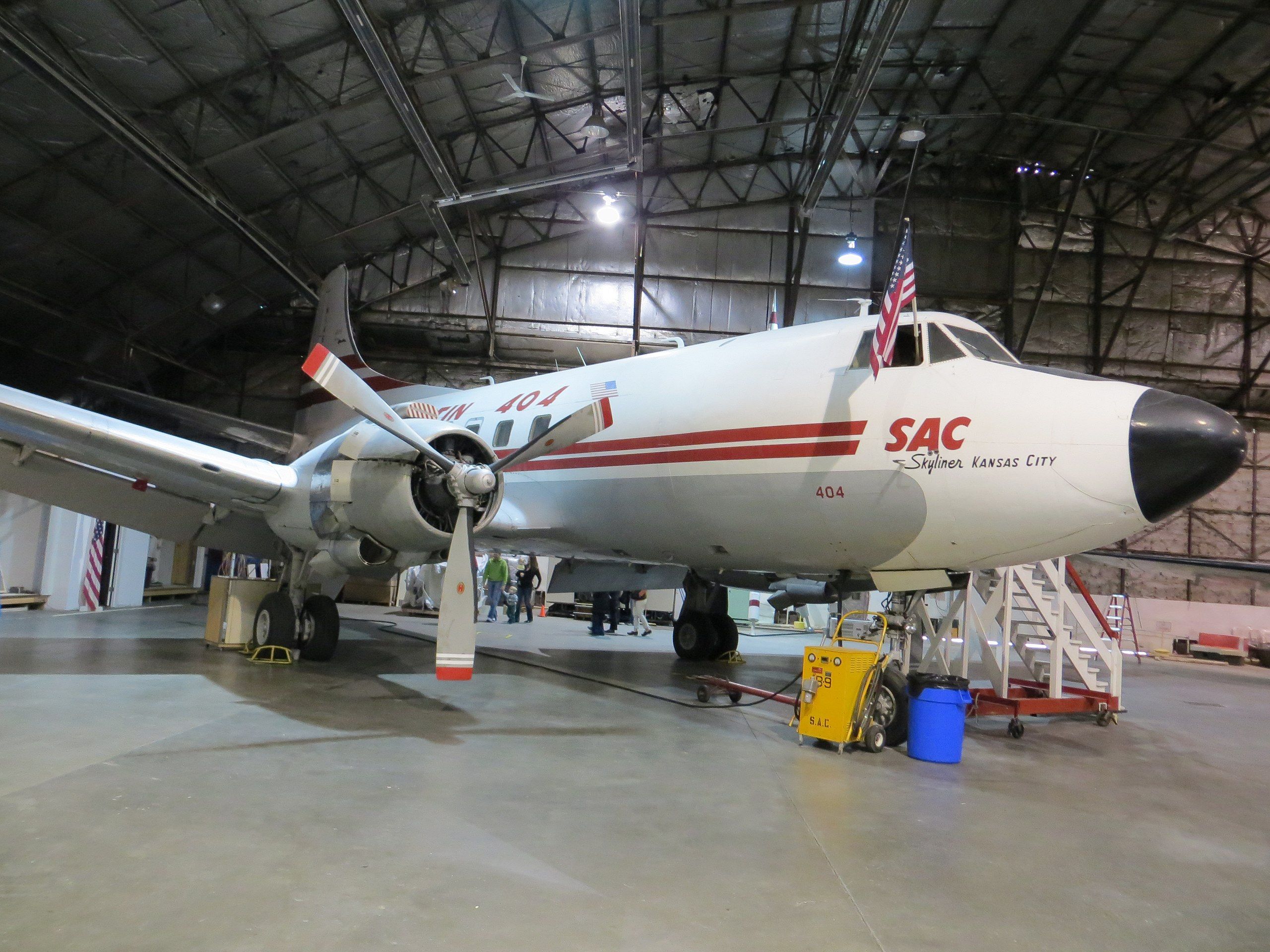At the end of World War II, many large and small airlines in the United States had acquired the surplus Douglas DC-3s for their commercial operations. The war-weary DC-3s could only accommodate an average of 25 passengers, and airlines needed a replacement. In 1950, the Glenn L. Martin Company introduced a twin-engine short-/medium-haul aircraft, the Martin 4-0-4.
The 4-0-4 design
The Martin 4-0-4 aircraft had a conventional design with a cantilevered tail section and a single vertical stabilizer. The aircraft could accommodate a total of 40 passengers, with a maximum takeoff weight of 44,900 lb (20,336 kg). Two Pratt & Whitney R-2800 radial piston engines provided a maximum cruise speed of 312 mph (502 kph) over a range of 1,080 miles (1,740 km).
The Martin 4-0-4 design was essentially an improved version of its predecessor, the Martin 2-0-2, with improved wing structure, a stretched fuselage with pressurized cabin, and retractable tricycle landing gears. At its Baltimore factory, the Glenn Martin Company built a total of 103 of the type, between 1950 and 1953.
The 4-0-4 operations
Eastern Air Lines (EAL), who had worked closely with the Glenn Martin Company to make numerous design improvements on the 4-0-4, took delivery of 60 aircraft. Trans World Airlines (TWA) had ordered 40 aircraft for their commercial operations.
TWA operated its first scheduled commercial service with a Martin 4-0-4 “Skyliner” on September 1st, 1950. EAL operated its first commercial service with a 4-0-4, branded as “Silver Flacon”, on January 5th, 1952, connecting cities within the eastern United States. EAL considered the improved 4-0-4 as the ‘best airliner available’ in the market at the time.
Apart from the test aircraft, the rest of the two 4-0-4s went to the United States Coast Guard (USCG). The USCG used their aircraft as executive transport aircraft, before those were transferred to the United States Navy in 1969.
Second-level operations
Both the EAL and TWA operated their 4-0-4 fleet between 1951 and 1962 before the aircraft were welcomed in the second-hand market. A number of retirees from EAL were acquired by Southern Airways, which operated the fleet until 1978.
Some other recipients of the retired 4-0-4 were Pacific Air Lines, Piedmont Airlines, Atlantic Southeast Airlines, and Ozark Air Lines. The New Jersey-based Vero Monmouth Airlines acquired the ex-Southern Airways fleet in 1978 and operated as charter aircraft until 1985.
Most second-level airlines operated their fleet of 4-0-4 between 1962 and 1985. The last flight of the Martin 4-0-4 took place in February 2008 to Valle airport in Williams, AZ, for restoration.
Static displays
Many examples of the Martin 4-0-4 have been restored and placed on displays at museums across the United States. The first-ever prototype 4-0-4 has been restored and is on display at the Glenn L. Martin Aviation Museum in Maryland. The ex-TWA 4-0-4 Skyliner is on a static display at the National Airline History Museum in Kansas City, MO.
Another 4-0-4 aircraft, which previously flew with TWA and Pacific Air Lines, is displayed at the Planes of Fame Air Museum at Valle Airport in Arizona. The ex-EAL 4-0-4 (Silver Falcon) has been on a display, in EAL livery, at the Mid-Atlantic Air Museum in Reading, PA, since 1991.
Regardless of which aviation site it is displayed at, the Martin 4-0-4s remain a postwar commercial aviation success story.
Have you had a chance to visit one of many Martin 4-0-4 static display sites? Tell us in the comments section.
[ad_2]
Source link






